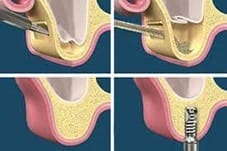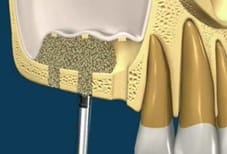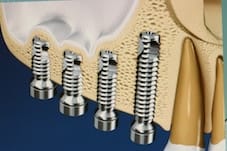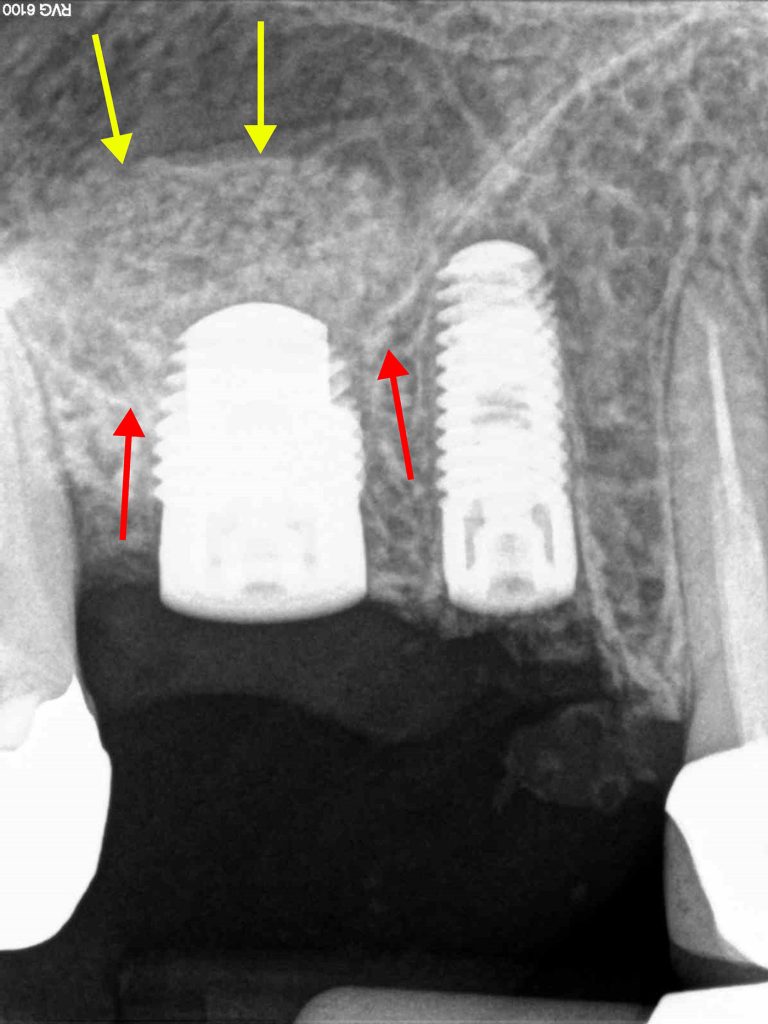Understanding Sinus Lift Procedures
A key to implant success is the quantity and quality of the bone where the implant is to be placed. The upper back jaw has traditionally been one of the most difficult areas to successfully place dental implants, due to insufficient bone quantity and quality and the close proximity to the sinus. If you’ve lost bone in that area due to reasons such as periodontal disease or tooth extraction, you may be left without enough bone to place implants.
Sinus lift surgery – also known as sinus augmentation – can help correct this problem by raising the sinus floor and developing bone for the placement of dental implants. Several techniques can be used to raise the sinus floor and allow for new bone to form.
In one common technique, an incision is made in the gum to expose the bone. Then a small circle is made into the bone. This bony piece is lifted into the sinus cavity, much like a trap door, and the space underneath is filled with bone graft material. Finally, the incision is closed and healing is allowed to take place. This procedure is often called an open or direct sinus lift. Direct sinus lifts are indicated when there has been a significant loss of bone in the upper jaw. Depending on your individual needs, the bone usually will be allowed to develop for five to nine months before implants can be placed. After the implants are placed, an additional healing period is required. In some cases, however, the implant can be placed immediately at the same time the sinus is augmented.
A second approach to sinus augmentation entails a minimally invasive incision in the gum to expose the bone. A small channel is then created in the location where the implant will be placed. Special instruments are used to lift the sinus floor, and bone grafting particles are inserted. The implant is placed immediately, and the incision is closed. This procedure is called an indirect sinus lift. Typically, the implant will be ready to use in four to five months. Indirect sinus lifts are indicated typically when half of the needed bone for implant placement is already present.
Schedule a Consultation Today
Having insufficient bone in the back upper jaw no longer needs to be an obstacle preventing you from having dental implants. Undergoing sinus lift surgery allows placement of dental implants in locations that were otherwise not possible.
Dr. Alger has been providing sinus lift surgery to his patients for decades, while constantly implementing new and better approaches to this procedure. He will discuss the option that he thinks is best for you. Newer approaches to sinus lift procedures can allow surgery to be performed with minimum to mild discomfort.
Give us a call to schedule a consultation, so that you can discuss with Dr. Alger your options for sinus augmentation. We look forward to hearing from you.
Direct Sinus Lift Procedure

Indirect Sinus Lift Procedure


This indirect sinus lift performed by Dr. Alger allowed placement of dental implants in the upper right posterior jaw. The red arrows indicate the location where the sinus was prior to treatment. The yellow arrows indicate the location of the new bone formation. These implants have had crowns placed by the patient’s dentist and have been successfully in function for years.

